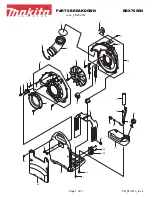
Chapter 3: Standard Radar Operations
3-23
MAR
PA
3.6 MARPA
Introduction to MARPA
The 10.4" LCD (and 10" CRT) display includes a MARPA (Mini Automatic
Radar Plotting Aid) function for target tracking and risk analysis. This section
gives an introduction to the Pathfinder Radar MARPA system and shows you
how to use the MARPA functions, you should also read
Section 7.5
.
MARPA improves the standard of collision avoidance by obtaining detailed
information for several automatically tracked targets. MARPA provides
continuous, accurate and rapid situation evaluation.
You can acquire up to ten targets, which are then automatically tracked by the
MARPA system. MARPA calculates target bearing and range, true speed and
course, CPA (Closest Point of Approach), and TCPA (Time to Closest Point of
Approach).
Each tracked target can be displayed with a vector depicting approximate
target speed (vector length) and course (vector direction). The calculated
target data can also be shown on the screen. Each target is continually assessed
and you are warned if one becomes dangerous or is lost.
Effective MARPA operation is dependent on accurate own ship’s heading,
plus SOG and COG. The better the quality of the heading data, the better
MARPA will perform. (MARPA functions without SOG and COG data but
only relative vector, CPA and TCPA are shown; target course and speed
cannot be calculated). For more information on heading sensors, and how to
connect them to your display, refer to
Appendix E
.
SAFTEY NOTICES
MARPA can improve collision avoidance when used wisely. It is the
user’s responsibility to exercise common prudence and navigational
judgements.
There are conditions where acquiring a target may become difficult. These
same conditions may be a factor in successfully tracking a target. Some of
the conditions are:
•
The target echo is weak.
•
The target is very close to land, buoys or other large targets.
•
The target or your own ship is making rapid manoeuvres.
•
Choppy sea state conditions exist and the target is buried in excessive
sea clutter or in deep swells.
•
Choppy sea state conditions exist yielding poor stability; own ship’s
heading data is very unstable.
•
Inadequate heading data
Summary of Contents for hsb2 Series
Page 2: ...HSB Series Color LCD Display Owner s Handbook Document number 81165_2 Date 7th July 2000...
Page 3: ......
Page 42: ...Chapter 2 Getting Started Adjusting the Display 2 11 Selecting the Mode of Operation...
Page 65: ...2 34 HSB Series Color LCD Display Displaying the Radar and Synchronizing Radar Chart...
Page 161: ...7 20 HSB Series Color LCD Display Position Offset...
Page 201: ...A 4 HSB Series LCD Color Display Appendix A Specification...
Page 207: ...B 6 HSB Series Color LCD Display Appendix B Using the Auxiliary Junction Box...
Page 231: ...viii HSB Series Color LCD Display...
















































